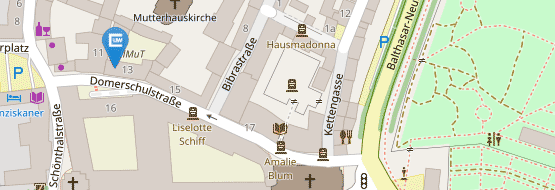Gingiru Symbolism

The gingiru harp of the dogon people of Mali, who have their retreat in the Bandiagara rock massif, is considered the instrument of healers and diviners. The complex cosmogony of the Dogon is closely linked to the instrument. On the one hand, it is an image of the universe: the membrane is the earth, while the round carved resonator represents the sky. The four types of wood get their meaning from the myth of the reorganization of the universe by the creator god amma.
Amma sent down an ark to earth with animals, plants and minerals and several nommo spirits, among them the eight ancestors of man. In order for the fertility-bringing rains to begin and the descent to begin, amma sacrificed a nommo. Its blood poured out and the eight grains of grain stored in the collarbones scattered over the earth. Amma divided the body into five parts, threw four of them in the cardinal directions, where they turned into the trees whose species are used to build the gingiru, which thus becomes the image of the nommo:
North - head - sa tree - corpus
south - chest - karite tree - supporting rods under the membrane
west - abdomen - yullo tree - neck
east - leg - baobab tree - bar
The fifth part, an arm, turned into a crocodile.
The corpus is also related to the loom: singing to the harp playing weaves the words of the nommo ancestors into the texture and renews the memory. The corpus is also related to the bowl of the blacksmith, the leader of the eight nommo ancestors. Both resemble the ark that amma sent.

The parts of the instrument further relate to the nommo:
Openings on the body = eyes.
bridge = liver, mouth and teeth (voice)
Eight notches in the rim of the bridge refer to the eight ancestors.
Four notches in the tailpiece symbolize the four grains in the collarbone of the nommo.
The nommo is bisexual. The longer (upper) string plane is considered male, and the shorter string plane is considered female; the pendulum rattle attachment illustrates the female portion, while the string support tip illustrates the male.
Foot neck and plate of the rattle body attachment are equated to the leg limb, chest, and head of the nommo. The rattle also symbolizes a female Nommo ear adorned with eight earrings, and at the same time his curved hand, which he holds to his ear to hear the invocations of the people. The rattle attachment is also associated with the hoe used by Dogon women to cultivate the eight grains, the rattling representing the noise of field work.
The body of the instrument is related to the bowl-like tool tray of the blacksmith: both symbolize the ark that Amma sends to earth. The leader of the eight nommo who brought the seeds was a blacksmith.
Furthermore, the bridge harp is compared to a loom: strings and chain surfaces, notch bridge and comb, support rods and foot pedals form a symbolic connection. Playing the harp with singing is equivalent to weaving: The player weaves the words of one of the eight ancestors into the fabric.
Reference: U. Wegner 1984. Afrikanische Saiteninstrumente, Berlin (Staatliche Museen Preußischer Kulturbesitz), 180-4.





